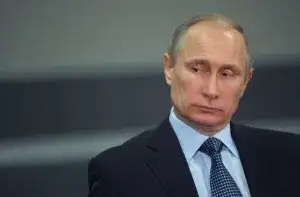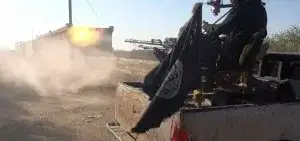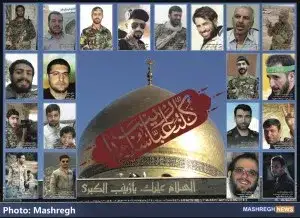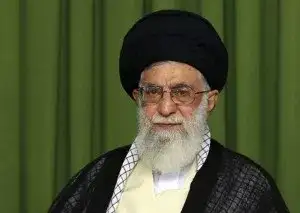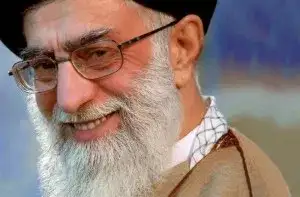Big news from Syria, Sinai, and Iran
November 4, 2023 by Thomas Wictor
When there’s big news, back pain must be put aside.
First, we have this.
The British government has suspended all flights between the UK and the Egyptian resort of Sharm el-Sheikh after US and UK officials said they believe the Russian plane that crashed over the Sinai peninsula may have been brought down by an explosive device.
The UK foreign secretary, Philip Hammond, said his government is now advising against all but essential travel through Sharm el-Sheikh airport in Egypt as there is a “significant possibility” that the plane was brought down by an explosion on board, the strongest remarks yet by an official on the cause of the crash.
US officials believe that the cause of the crash involving the Russian airline over Egypt’s Sinai peninsula at the weekend was “most likely” a bomb planted by ISIS or an ISIS affiliate, according to reports by US television news networks.
Among them, CNN stated it has been told that US intelligence has not yet reached a formal conclusion.
Intercepted communications played a role in the tentative conclusion that the Islamic State group’s Sinai affiliate planted an explosive device on the Russian plane, according to a US official being quoted by the Associated Press.
Actually, they have more than intercepted communications.
A U.S. satellite registered a “heat flash” about the time that the plane crashed, a U.S. official said Tuesday, speaking on the condition of anonymity because he was not authorized to discuss the information publicly. Although that could possibly mean a bomb or a fuel tank aboard the plane exploded, he said it was too soon to jump to conclusions and that the heat flash may have been triggered by the breakup of the plane itself.
If the Islamic State managed to get a bomb onto a Russian airliner, you know who’s to blame, right after the terrorists themselves?
He’s been playing stupid games in Syria, instead of doing what he said he was going to do.
Up to 90 percent of Russia’s airstrikes have targeted moderate Syrian forces, not Daesh, senior Obama administration officials said Wednesday.
“Eighty-five to 90 percent of Russian strikes have hit the moderate Syrian opposition and they have killed civilians in the process,” Assistant Secretary of State for Near Eastern Affairs Anne Patterson said during testimony before the House Foreign Affairs Committee.
Russia has maintained that its sorties in Syria are targeting Daesh, but the U.S. and its allies have dismissed the claim.
We don’t have to believe the Obama administration if we don’t want to.
The Islamic State has continued to make gains in central Syria amid a barrage of Russian airstrikes that have mostly targeted rebel groups elsewhere in the country, according to reports.
The terrorist group is reported to have seized the town of Mahin in central Homs province during the weekend. Mahin is located near a strategic highway that links Homs to the capital Damascus. Islamic State militants also captured large arms depots in Mahin.
Additionally, the Islamic State (IS, also known as ISIS or ISIL) has taken control of some villages in eastern Aleppo province, the scene of intense clashes between rebel groups and Syrian government forces backed by Iranian troops and Russian airstrikes. The advances have allowed the terrorist group to expand from its current stronghold in northern and eastern Syria.
Anybody who follows the Syrian civil war knows that Assad and Iran had a de facto truce with the Islamic State. The plan was to let the Islamic State defeat all the other groups fighting in Syria, and then Assad, Iran, and Russia would fight the winner. Well, the Islamic State is like a rabid dog. It wants to kill everyone, even itself. So now a Russian airliner has been blown out of the sky, and the Islamic State is advancing while Assad, Iran, and Russia attack the groups that don’t threaten the entire region.
Here’s the view from Syrian rebels.
If Moscow had been determined to destabilize the situation in Syria, many of Mr. Assad’s opponents say, it would have been hard-pressed to think of a more electrifying and polarizing way.
Putin screwed up. He’s not the geopolitical genius everyone was claiming just two weeks ago. I always knew that. Studying military issues gives you the real picture far more often than reading about politics.
This is a military story that tells you more than all the jabbering about how brilliant Putin is.
A joint rebel force in Syria consisting of Sunni Arabs, Assyrians and Kurds announced it was launching an offensive to liberate portions of the country’s northeastern al-Hasakah province from Islamic State militants.
The Syrian Democratic Forces announced its formation last month, asserting the need for the “establishment of a unified national military force to all Syrians consisting of Kurds, Arabs, Assyrians and all others living in the geographical locations of Syria.”
The group has U.S. backing and comprises a series of units under the Syrian Arab Coalition, The Syriac Military Council and Kurdish forces known as the People’s Defense Units, or YPG, and the Women’s Defense Units, or YPJ.
More and more people are looking to the Kurds, who are not lunatics and who have very powerful friends. Kurds regularly defeat the Islamic State, often in highly amusing ways.
The Syrian Democratic Forces is why the US has sent special operators, the “boots on the ground” that we were told were not an option.
By embedding Special Forces with local Sunni anti-ISIS groups, [Nicholas Heras of the Center for a New American Security’s Middle East Security Program] said the administration hopes to build up a multi-ethnic democratic Syrian coalition and facilitate coordination with Kurdish fighters to bring the fight to ISIS.
“This is not going to yield fruit overnight or in the coming weeks,” Heras said, highlighting the complicated, socio-political divides between the Kurds and local Syrian forces.
However, Heras said he thinks 50 Special Forces is more than enough to test whether or not this scalable coordinating strategy is an effective model going forward.
President Obama has changed his policy, and so has Putin. Russia is now on the same page as the Arab League and the US.
Russia does not see keeping Bashar al-Assad in power as a matter of principle, the Foreign Ministry in Moscow said on Tuesday in comments that suggested a divergence of opinion with Iran, the Syrian president’s other main international backer.
Fuelling speculation of Russian-Iranian differences over Assad, the head of Iran’s Revolutionary Guard Corps suggested on Monday that Tehran may be more committed to him than Moscow was.
In the Middle Eastern and Russian ruling classes, a normal day includes backstabbing, inconsistency, shifting alliances, make-believe, and craziness. It’s impossible to know what really happened, but I think it was something like this: The Saudis and Israel got firm commitments from the US, the EU, and some Asian nations. Though Russia grudgingly agreed, Putin played both sides, not interfering with Israel and the Arab League, but also not cooperating fully.
So, an airliner full of Russian civilians was likely sacrificed. And I’m sure that Putin didn’t want this, if it’s true.
The battle for Al-Safira, 20 km. south of Aleppo - and the key to its capture - will go down in Iran’s Revolutionary history as the most humiliating defeat its elite forces have sustained in all its 36 years. This week, Iran sent into battle outside its borders 2,000 of its best-trained, loyal and well-equipped combat troops, detached from six elite Revolutionary Guards Corps (IRGC) units. The battle at Al-Safira, fought with Russian air cover alongside Hizballah and Syrian army forces, was supposed to be the turning point in the Syrian civil war. Its objective was to break through Islamic State and Nusra Front defense lines around Al-Safira, and knock over the positions the Islamists had erected for blocking the roads from Aleppo and central Syria to Damascus, among them Route 5, the main highway. After that, they planned to advance on Aleppo.
Their offensive had the opposite result.
Fighters from ISIS and the Nusra Front stopped the Iranian and Syrian troops in their tracks and forced them to abandon the sections they held along the main transportation routes leading to Aleppo. So not only did the Iranian-led army fail to clear the way to this key city, but they were driven back by ISIS fighters, who took control of the 20-kilometer route from Al-Safira to Aleppo. The day ended with the jihadis in position to tighten the siege on both cities…
Iran’s death toll in the battle for Aleppo may never be known, but the numbers of officers and enlisted men who died was so high and the shock effect so extreme that IRGC Deputy Commander, Gen. Hossein Salami had to call a live news conference on Iran’s state-run television Wednesday, Oct. 28, to explain why his country came to be involved in the Syrian war.
DEBKA has a very spotty record for accuracy, but there’s circumstantial evidence to back up this claim. It comes from the guy in charge of this ongoing fiasco.
Those “Death to America” chants often shouted in Iran? They’re not about what you might think, according to Iran’s supreme leader.
Ayatollah Ali Khamenei said Tuesday that the slogan — a frequent feature of anti-American rallies in Iran — was aimed at the U.S. government and not its people.
“Your ‘Death to America’ slogan, and the cries by the Iranian nation, have strong logical support behind them,” he told Iranian students in Tehran, according to The Associated Press. “Obviously by ‘Death to America’, we don’t mean death to the American people. The American nation is just like the rest of the nations. It … means death to U.S. policies and its arrogance.”
Singing a different tune now, aren’t you, Ali?
DEBKA lists the “six elite Iranian brigades” which sent units to the Al-Safira battle for Aleppo.
The Saberin brigade, a Special Operations unit established in 1992 to fight Kurdish and Arab guerillas with separatist aspirations. Most of its fighters are from Tehran.
The Fatemyoun brigade, consisting entirely of Afghan Shiites. Their regular duty was to guard the Tomb of Zeynab, a Shiite shrine in the suburbs of Damascus. But a month ago, the IRGC expanded the brigade to division strength of 15,000 fighters for front-line combat in Syria and Iraq.
Brigade 15 - or the Emam Hassan Mojtaba Brigade. Made up of fighters from central Iran, the brigade specializes in guerilla and urban warfare.
Independent brigade 83, or the Emam Jaafar Saydeq Brigade. This is an airborne unit whose fighters are rated as the toughest, most merciless and religiously motivated of all IRGC contingents. Not surprisingly, they come from Qom province, whose center, the city of Qom, houses Iran’s clerical establishment and is the most important Shiite site after the holy cities of Najaf and Karbala in Iraq.
Brigade 33, or the Al-Mahdi Brigade. This is another airborne unit with extensive experience in guerrilla warfare, which is based in the city of Jahrom.
The Ahwaz Armored Brigade, or the Hazrat-Hojjat Brigade. Its fighters come from the largely Arab-speaking and constantly restive province of Khuzestan in southeastern Iran. The brigade was upgraded recently with advanced weapons systems for fighting in Syria, Iraq, or any other neighboring country.
The six Revolutionary Guards brigades were held up proudly as Iran’s finest fighting units, the invincible bulwark of the revolutionary Islamic regime in Tehran against the mightiest of its enemies. The vast gap between their performance and the ayatollahs’ fiery rhetoric is bound to redound on the authorities in Tehran which sent them into battle.
Since the Iranian Revolutionary Guard Corps performed horribly against the worst army on earth during the Iran-Iraq War (1980-1988), it was insanity to think that they’d save the day in Syria.
I do believe that despite his smiles and bluster, someone’s getting nervous.
Good.

